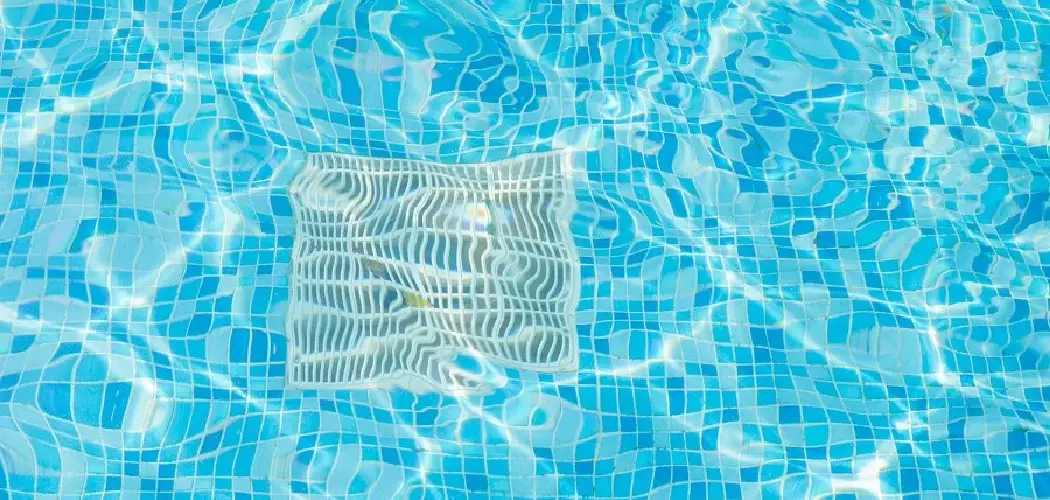Are you trying to determine if your pool’s main drain is clogged? Something isn’t flowing quite right in your pool, but you’re not sure what the underlying issue might be. You’ve checked for any visible blocks or debris in the system and no luck. This could all point to the dreaded reality that a main drain is clogged! Unfortunately, this can lead to costly repairs and larger safety concerns, depending on how severe it may be.
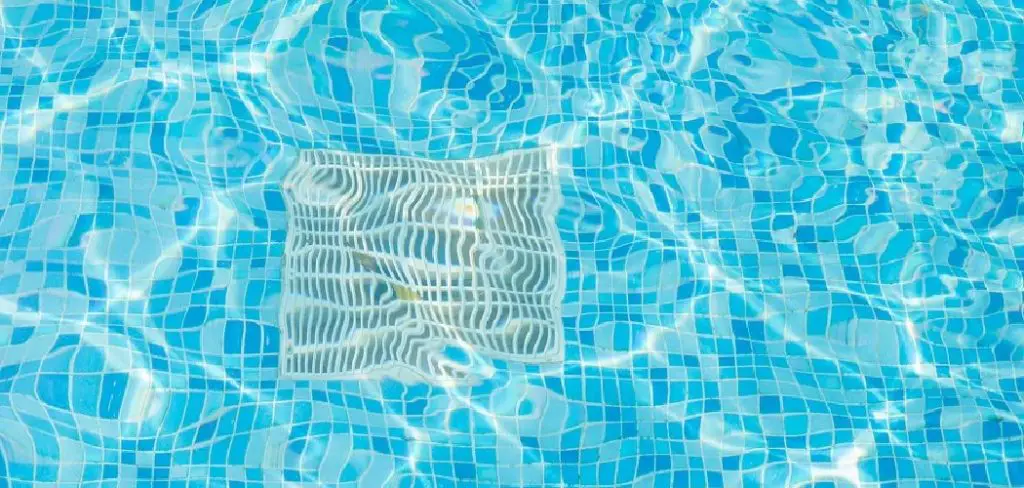
Pool owners should always be on the lookout for this issue and know how to diagnose it properly. In this guide, we’ll go over some key indicators of how to tell if pool main drain is clogged.
So, let’s dive into how to detect a clog so that you can fix it quickly and get back to swimming safely again.
What Will You Need?
Before we jump into the signs of a clogged main drain, it’s important to have some essential tools on hand. These will help you in both detecting the clog and fixing it.
- A Pool Vacuum or Brush: This is used to clean and remove any debris from the bottom of the pool where the main drain is located.
- A Flashlight: You’ll need this to view and inspect the drain properly. Try to use a waterproof, submersible flashlight.
- A Pool Skimmer or Net: This is used to remove any floating debris from the water’s surface, which could be contributing to a clogged main drain.
- A Plunger: This can help break up more minor blockages in the drain.
- A Plumbing Snake: If all else fails, a plumbing snake may be necessary to remove any stubborn clogs.
Once you have these tools ready, let’s move on to identifying the signs of a clogged main drain.
10 Signs on How to Tell if Pool Main Drain is Clogged
Step 1. Decreased Water Circulation:
If you notice a significant reduction in the water flow through your pool’s return jets, this could indicate that the main drain is clogged. If the main drain is blocked, water will have no other path to flow through, resulting in decreased circulation. This can also cause your pool’s water to become cloudy, which is another sign of a clogged main drain.
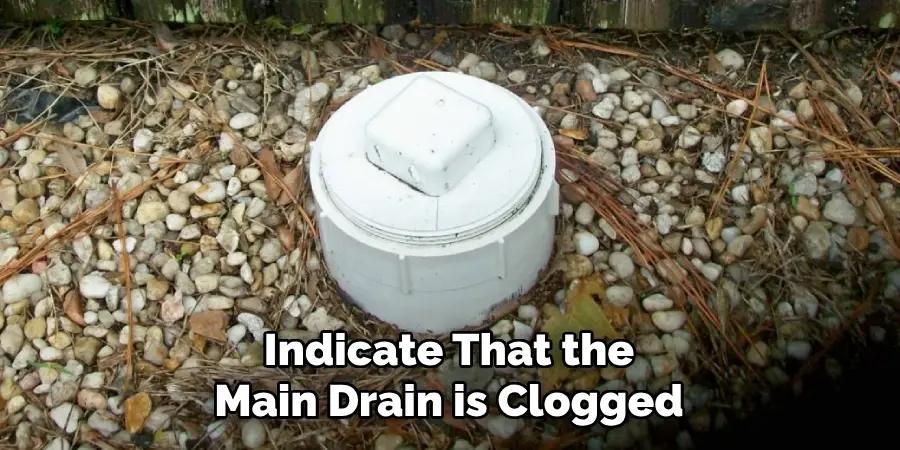
Step 2. Pool Vacuum Inefficiency:
Another telltale sign of a clogged main drain is when your pool vacuum doesn’t seem to perform at its peak. If you’re cleaning your pool, but the dirt and debris don’t seem to be getting sucked away as efficiently as usual, it might be due to a blockage in the main drain.
The vacuum relies on the main drain’s suction to function effectively. An underperforming pool vacuum is a clear sign that something may be amiss with your main drain.
Step 3. Increased Pump Pressure:
Often, a clogged main drain will increase the pressure level of your pool pump. This is because when the drain is blocked, the pump has to work harder to circulate water, leading to increased pressure.
Monitoring your pump’s pressure gauge helps identify when a drain may be blocked. If you notice a significant increase in pump pressure that isn’t explained by other factors, checking your main drain for obstructions is a good idea.
Step 4. Slow Drainage:
Another key sign of a clogged main drain is slow drainage. This can be seen when you try to empty your pool or when the pool’s water level lowers slower than usual. If it takes longer than expected for the water to drain out, it could indicate that something obstructs the drain.
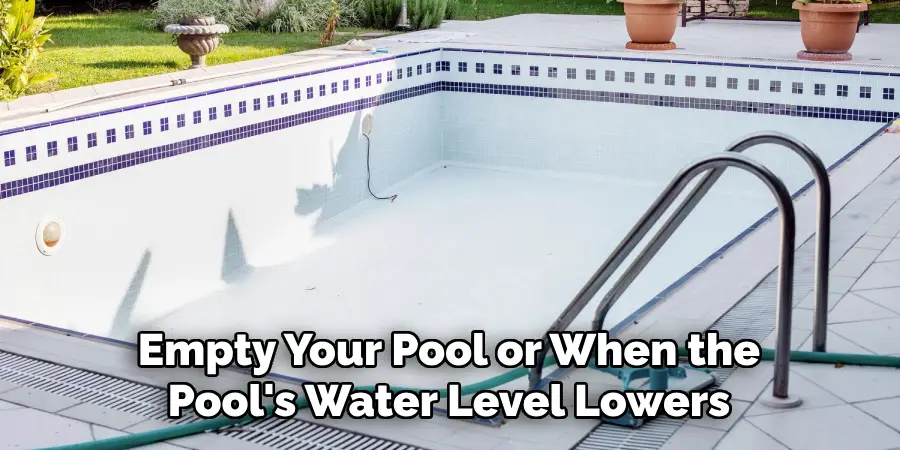
This is often because the blockage does not allow the water to flow out as freely and quickly as it should. Remember, any sudden changes in the speed of drainage should be noticed and warrant inspection of the main drain.
Step 5. Unusual Noises:
Listen carefully to your pool’s system. Unusual noises, particularly gurgling sounds, may indicate a clogged main drain. When a drain is blocked, water has difficulty passing through, which can produce a noticeable sound as it struggles to circulate. If you hear gurgling or bubbling from your pool pipes or drain, it’s a vital sign that your main drain might be clogged.
Step 6. Presence of Algae:
If you notice an unusual algae growth in your pool, it could be a sign that your main drain is clogged. When the water circulation decreases due to a blockage, it can lead to stagnant water. Stagnant water provides the perfect environment for algae to grow.
This can turn your pool green and make it unsightly and unsafe for swimming. So, if you’re struggling with persistent algae growth despite proper chemical balance, check your main drain for clogs.
Step 7. Pool Heater Overheating:
If the pool heater is overheating, it could also be a sign that the main drain is blocked. The heater relies on a constant flow of water to operate correctly. When a blockage in the main drain restricts this flow, the heater can run too hot and become damaged. If you find your heater running hotter than usual or shutting off unexpectedly, it’s advisable to inspect your main drain for a possible clog.
Step 8. Inconsistent Pool Level:
A sudden or unexplained change in your pool’s water level can indicate a clogged main drain. If the water level drops rapidly or fluctuates significantly, it could be due to an obstruction blocking proper water circulation.
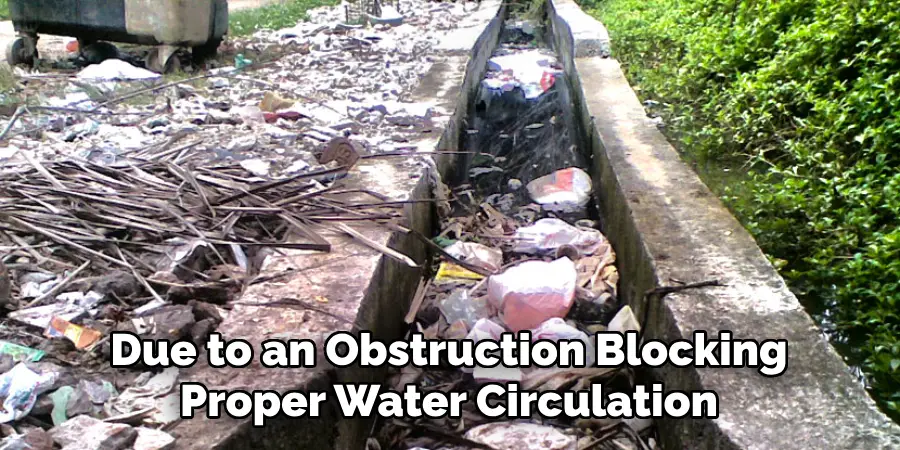
When the drain is clogged, the water may not flow back to the pool correctly, causing the level to lower unexpectedly. Keep a close eye on your pool’s water level, and if you notice any unusual changes, inspect the main drain for potential clogs.
Step 9. Unpleasant Odors:
If your pool starts emitting unpleasant odors, it could be a symptom of a clogged main drain. The stagnant water resulting from a blockage can lead to the buildup of bacteria and algae, both of which can cause bad smells. This situation can be worsened if debris trapped in the drain starts to decompose. If you notice unusual smells coming from your pool, it’s time to check the main drain for any obstructions.
Step 10. Presence of Debris Near the Drain:
Lastly, if you notice an accumulation of debris around your pool’s main drain, it’s a strong indication of a clog. Leaves, dirt, or other materials may gather and cause a blockage, affecting the overall efficiency of your pool’s circulation system. It’s vital to clean and check this area to prevent potential blockages routinely. If you see a significant pileup of debris, it’s likely that your main drain is clogged and needs immediate attention.
By following these steps, you can quickly identify if your pool’s main drain is clogged and take necessary action to resolve the issue.
5 Additional Tips and Tricks
Tip 1. Regular Maintenance:
Regularly cleaning and maintaining your pool can help prevent main drain clogs. Make it a point to regularly remove debris like leaves and twigs from your pool.
Tip 2. Use Drain Covers:
Installing drain covers over your main drain can significantly reduce the chances of clogs by preventing large debris from entering the drain. These covers are easy to install and can save you from potential headaches and costly repairs in the future.
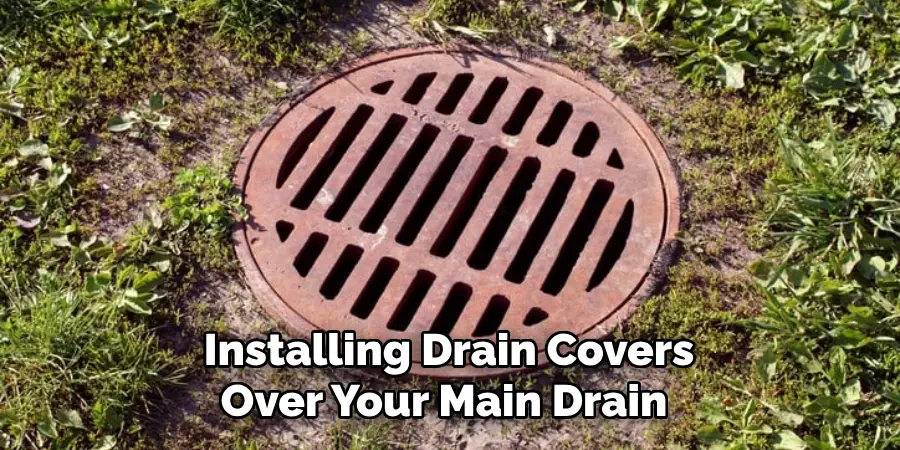
Tip 3. Check Your Water Levels:
Low water levels can lead to air getting trapped in the pipes, causing a decrease in suction and potential clogs. Regularly check your water levels and keep them at the recommended level.
Tip 4. Do Not Use Pool Drains as Skimmers:
Many people make the mistake of using pool drains as skimmers, which can result in clogs. Always use a skimmer specifically designed for removing debris from the surface of your pool.
Tip 5. Pay Attention to Warning Signs:
If you notice any changes in water flow or strange noises coming from your main drain, it could indicate a potential clog. Take action immediately to prevent further damage and costly repairs.
With these additional tips and tricks, you can ensure your pool main drain remains clean and unclogged.
5 Things You Should Avoid
1. Neglecting Regular Cleaning:
Avoid letting the pool go for long periods without regular cleaning. Accumulated debris can easily enter the main drain, causing clogs.
2. Using Cheap Pool Chemicals:
Cheap pool chemicals can cause imbalances in the water pH, which may lead to unwanted algae growth. These algae can clog your main drain if not adequately controlled.
3. Ignoring Slow Drainage:
If your pool drains slower than usual, it’s a sign of a potential clog. Avoid ignoring these signs and take immediate action.
4. Forgetting to Inspect the Drain Cover:
A damaged or incorrectly fitted drain cover can allow larger debris into the drain, leading to clogs. Always ensure your drain cover is in good condition and worked correctly.
5. Delaying Professional Help:
Finally, if you are unsure about the cause of a potential clog or how to resolve it, take your time to seek professional help. They can diagnose the problem and fix it before it causes further damage.
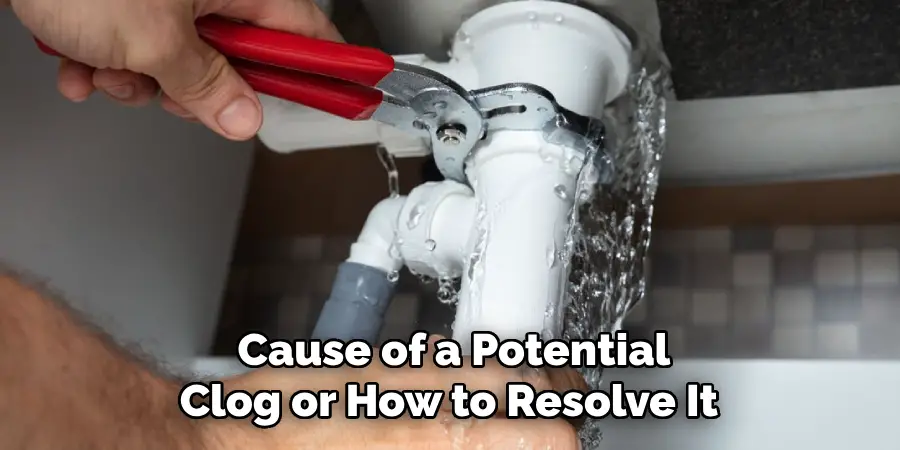
By avoiding these common mistakes and following the tips mentioned, you can ensure that your pool main drain remains unclogged, allowing you to enjoy a clean and well-maintained pool all year round.
Can a Pool Run Without the Main Drain?
Yes, a pool can run without the main drain. However, it is not recommended as the main drain plays a crucial role in maintaining proper water circulation and filtration. The central drain also helps prevent stagnant areas in the pool, which can lead to algae growth.
If your pool does not have a functioning main drain or becomes clogged, it is essential to seek professional help immediately to avoid potential health and safety hazards.
Regular maintenance and proper use of the main drain can prevent clogs and keep your pool running smoothly. So, it is always better to take preventive measures rather than deal with a clogged main drain later.
Conclusion
Detecting a clogged pool main drain can be a simple task as long as you familiarize yourself with the signs and symptoms of one. Remember, if your pool is not draining correctly, take caution and contact a local professional or trusted pool company for assistance. Keeping your pool’s main drain clean and clear will provide you with many summers of swimming in crystal clear and safe water.
Hopefully, the article on how to tell if pool main drain is clogged has provided you with the necessary information and tips to keep your pool running smoothly. Proper maintenance and care allow you to enjoy a stress-free swimming experience without worrying about clogs in your main drain.
So, let’s get out there and get our pools prepped for the summer! Who can break out the noodles, beach balls, and lounge chairs? Let’s make this summer one to remember!

